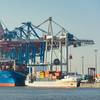IEA Sees Growth of Natural Gas
But the "Golden Age" is still in full swing as gas emerges as a significant transportation fuel, a new report says.
Natural gas will continue to increase its share of the global energy mix, growing at 2.4% per year between now and 2018, the IEA said in its Medium-Term Gas Market Report (MTGMR) issued today. However, this projected growth rate is lower than the IEA’s forecast last year of 2.7%, due to persistent demand weakness in Europe as well as difficulties in upstream production growth in the Middle East and Africa.
At the same time, the report sees gas emerging as a significant transportation fuel: Thanks to abundant shale gas in the United States and amid more stringent environmental policies in China, gas is expected to do more to slow oil demand growth than electric vehicles and biofuels combined.
“Even though we have revised our growth estimates downwards, the ‘Golden Age’ of gas remains in full swing,” said IEA Executive Director Maria van der Hoeven as she presented the report in Saint Petersburg. “Gas is already a major fuel in power generation, but the next five years will also see it emerging as a significant transportation fuel, driven by abundant supplies as well as concerns about oil dependency and air pollution. Once the infrastructure barriers are tackled, natural gas has significant potential for clean-energy use in heavy-duty transport where electrification is not possible.”
While the report foresees the share of gas in the global primary energy mix rising and while total gas demand is expected to rise to nearly 4,000 billion cubic metres (bcm) in 2018 from 3,427 bcm in 2012, gas faces challenges in all the major geographic regions. In the United States, in the absence of policy constraints on coal-fired plants, recovering gas prices will prompt coal to regain some of its share of the power market, putting US greenhouse-gas emissions from the power sector back on a growing track. Europe sees only a weak and partial recovery due to the Eurozone crisis and low carbon prices. Gas exports from the Middle East decline amid runaway domestic demand growth – especially in the power sector.
“The persistent tightness of LNG markets is a major concern as it limits the contribution of gas to sustainable energy security,” Ms. Van der Hoeven said. “’It also highlights the need to tackle energy subsidies and improve energy efficiency in major producing countries as well as to adopt supportive policies for LNG investment.”
Other key findings of the report include:
- Non-conventional production will remain a North American phenomenon in the medium term. The United States alone represents over one-fifth of the global increase in gas production, benefiting from technological developments and cost-efficient field services. Exploration in other regions continues, but is hindered by geology, infrastructure and environmental constraints as well as lack of social acceptance.
- Natural gas plays a major role in addressing air quality concerns in China. China will account for 30% of the growth of global gas demand. Despite the country’s impressive progress on domestic production, this still puts China on a path of increasing import dependency: In the next five years, China absorbs the entire production increase from Central Asia as well as one-third of the global increase in LNG supply.
- The tightness of LNG supply enables some recovery of Russian exports to Europe. Nevertheless, in the longer term, Russia will be able to maintain its premier position in the world of gas only by developing the resources and infrastructure for large-scale Asian exports.
The MTGMR is part of a series of medium-term forecasts that the IEA devotes to each of the main primary energy sources – oil, gas, coal and renewable energy – and, starting this year, energy efficiency.













